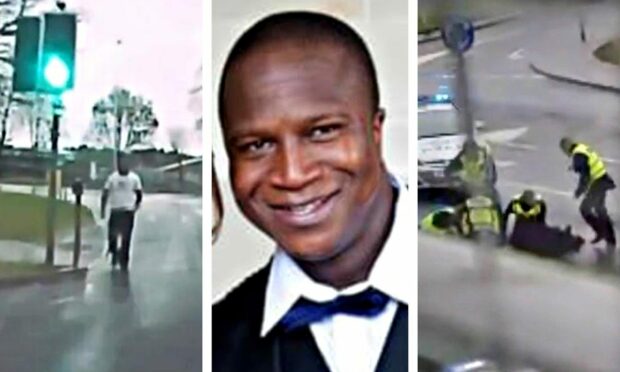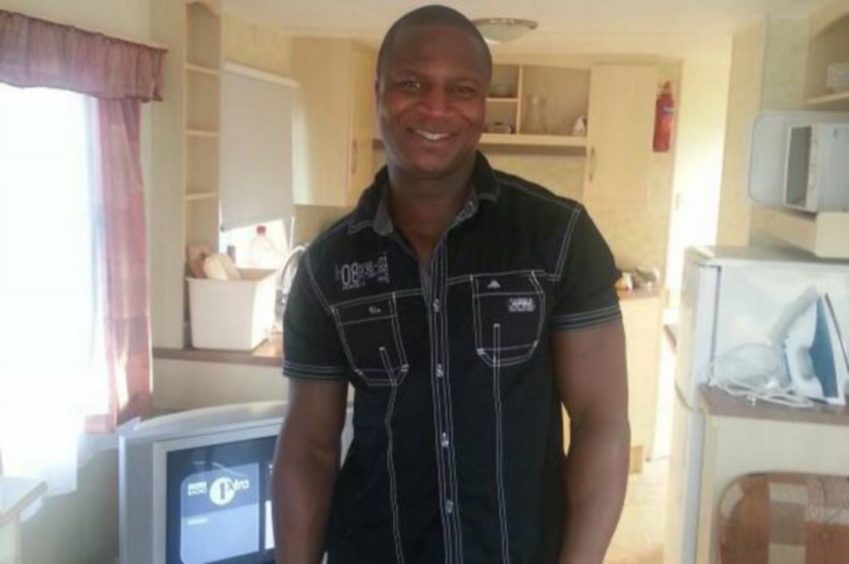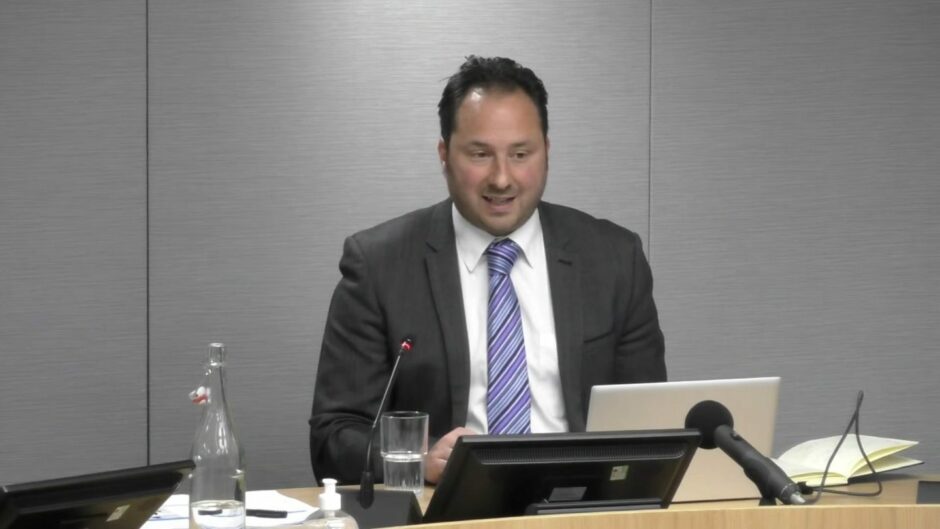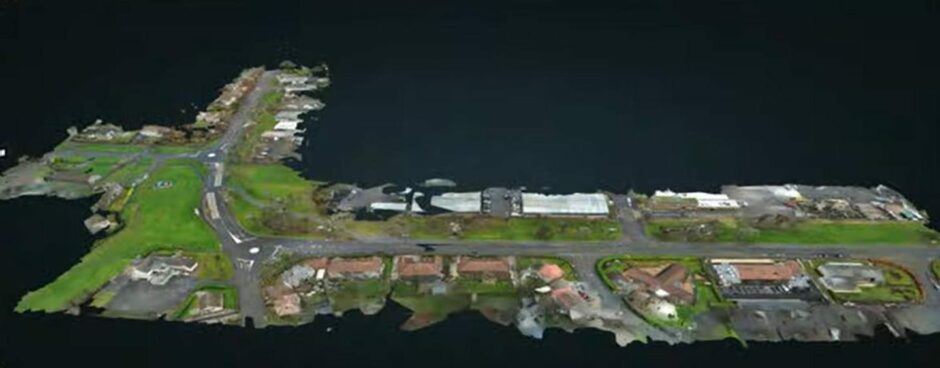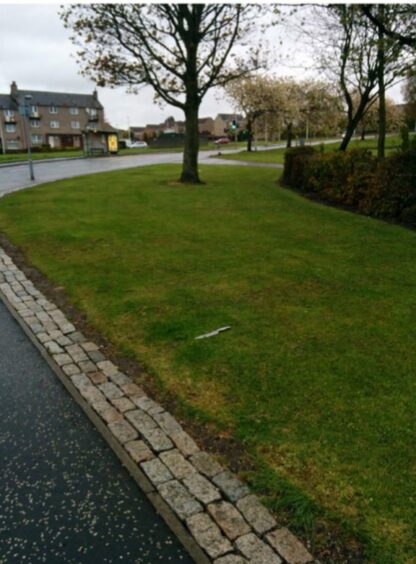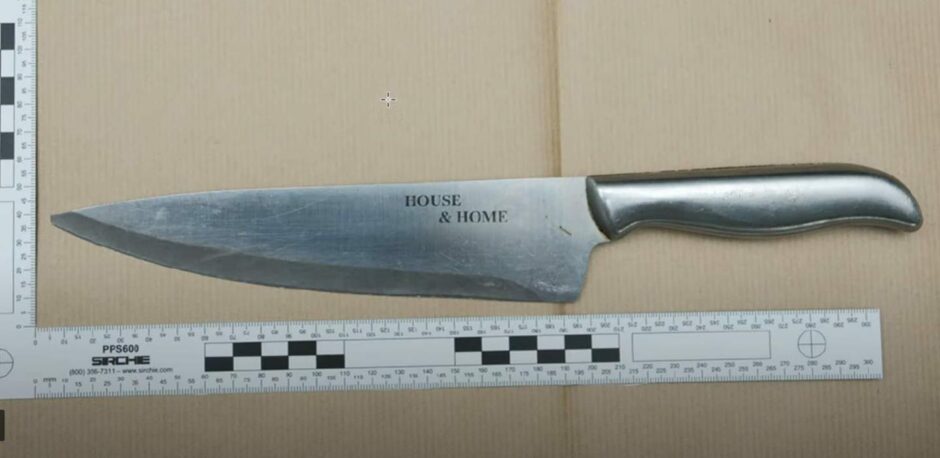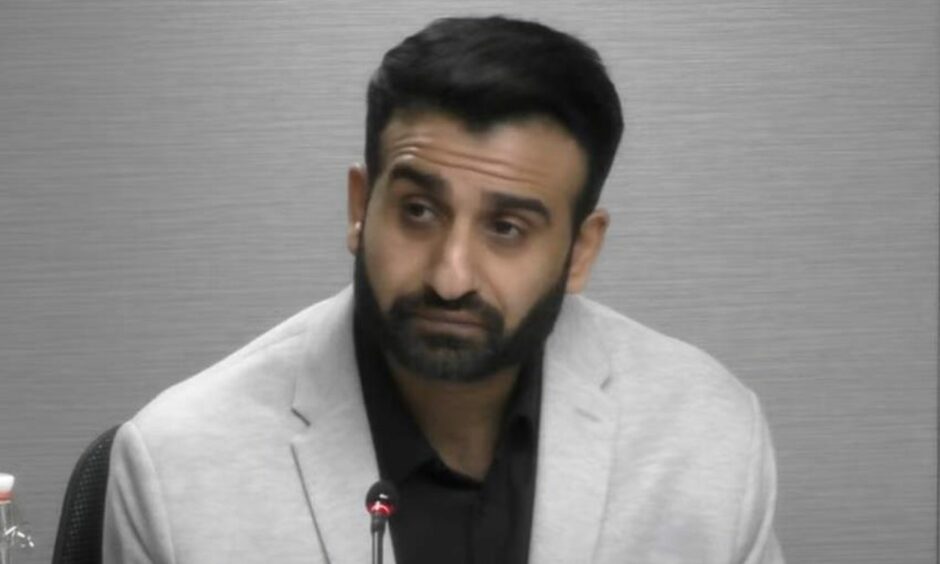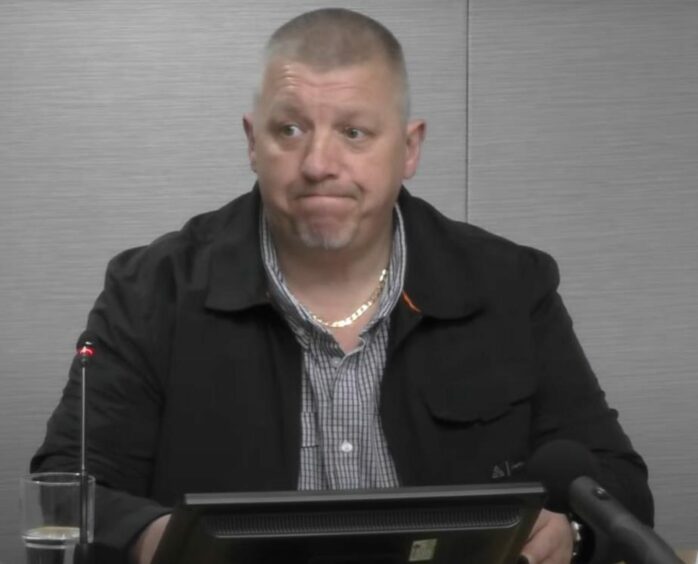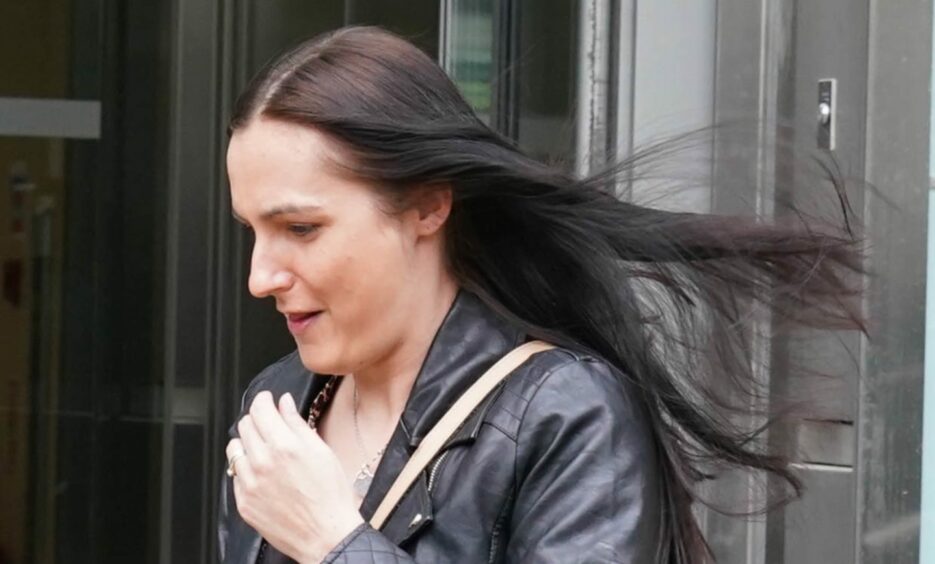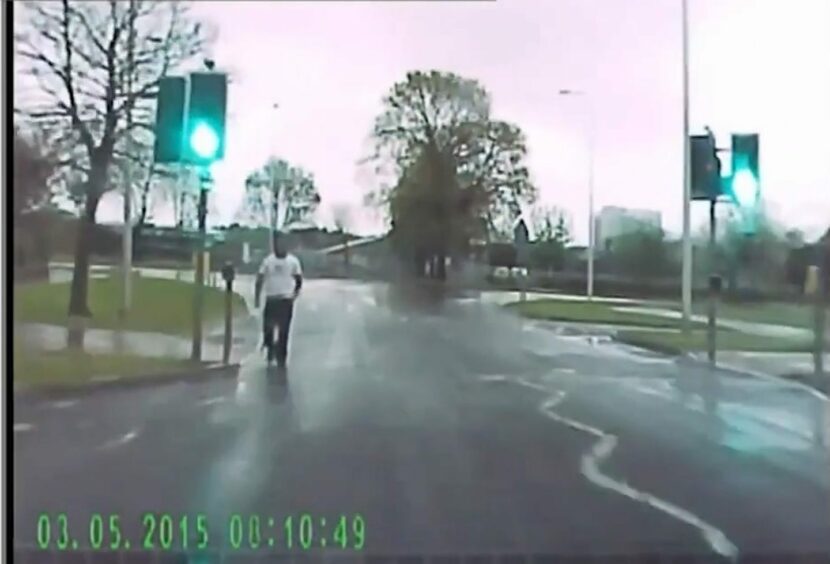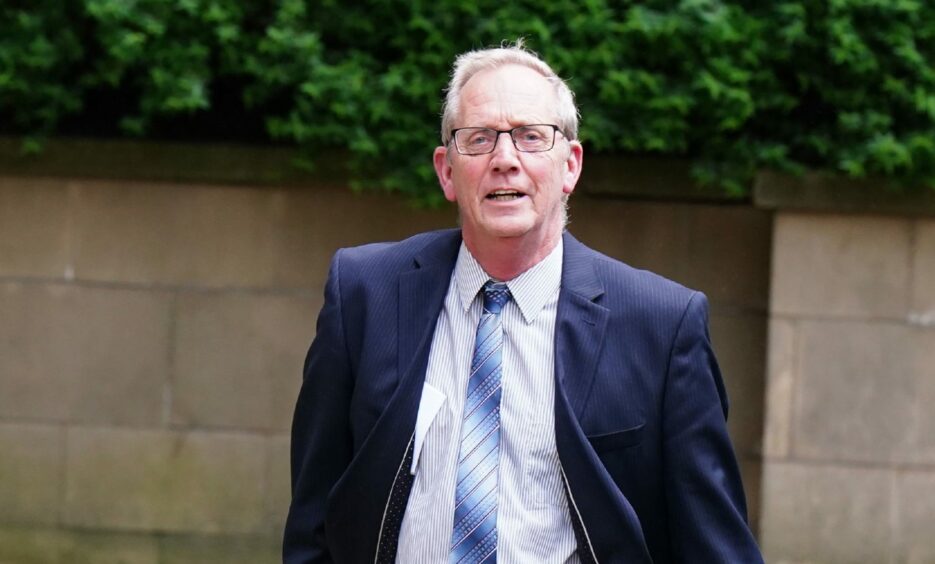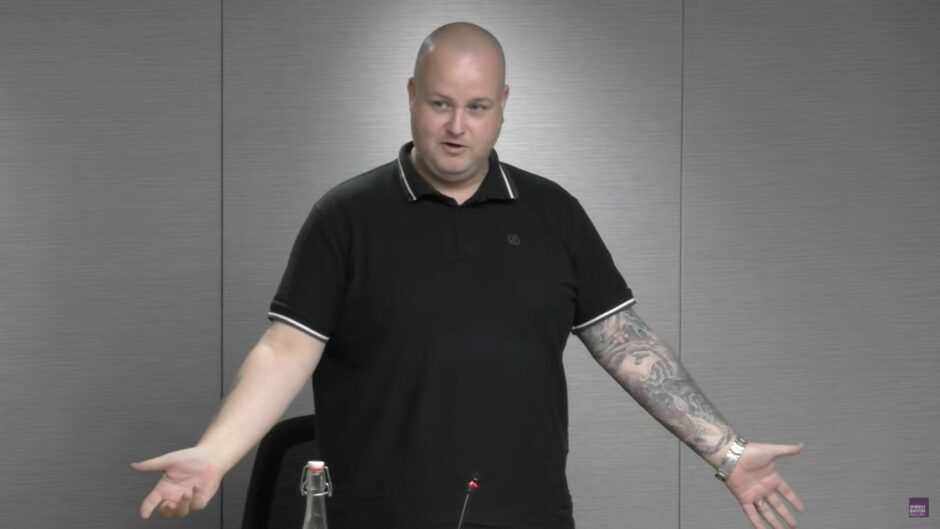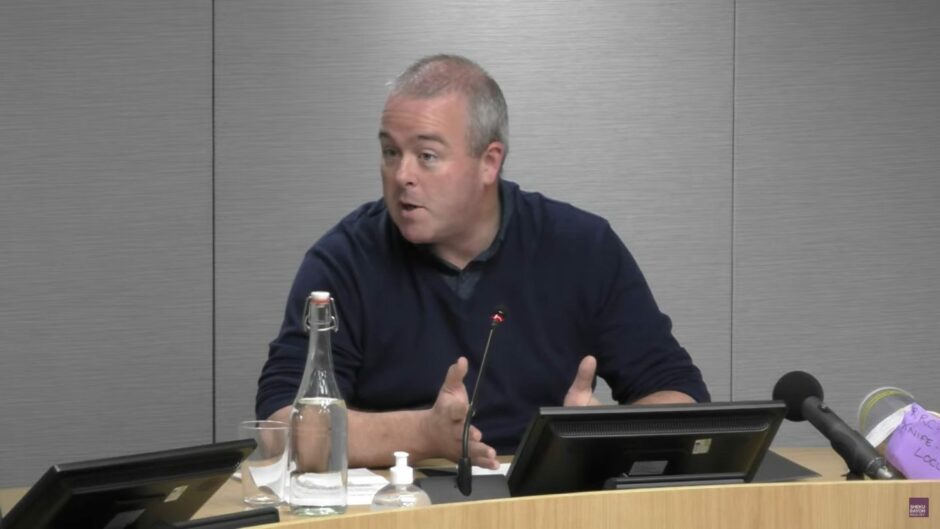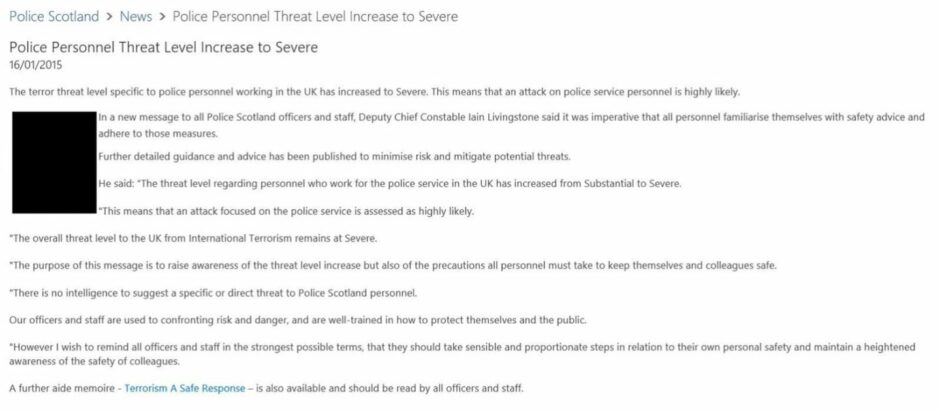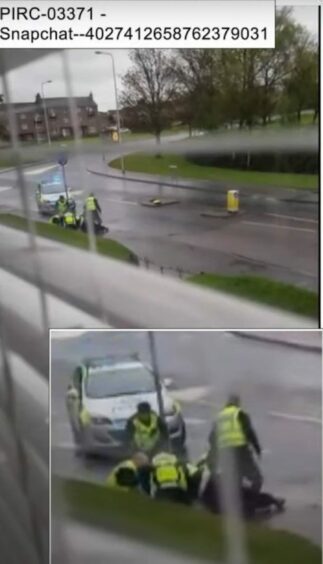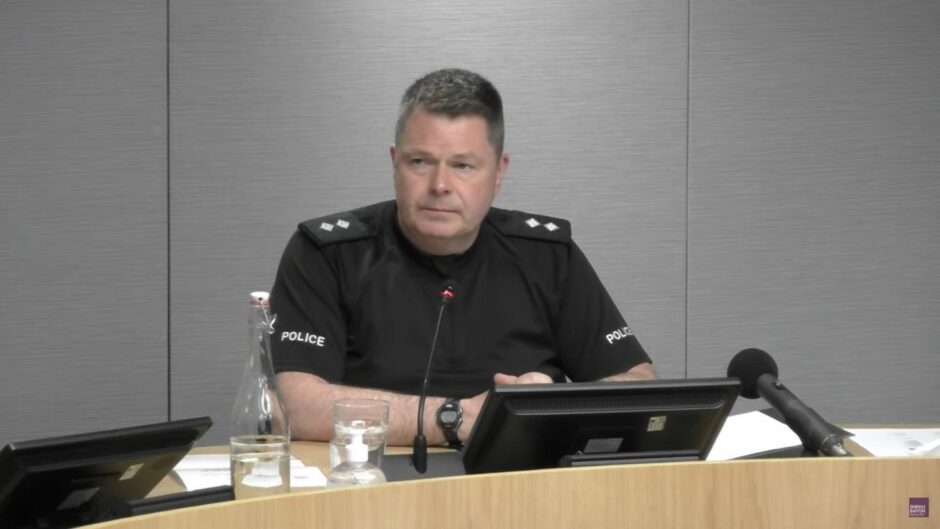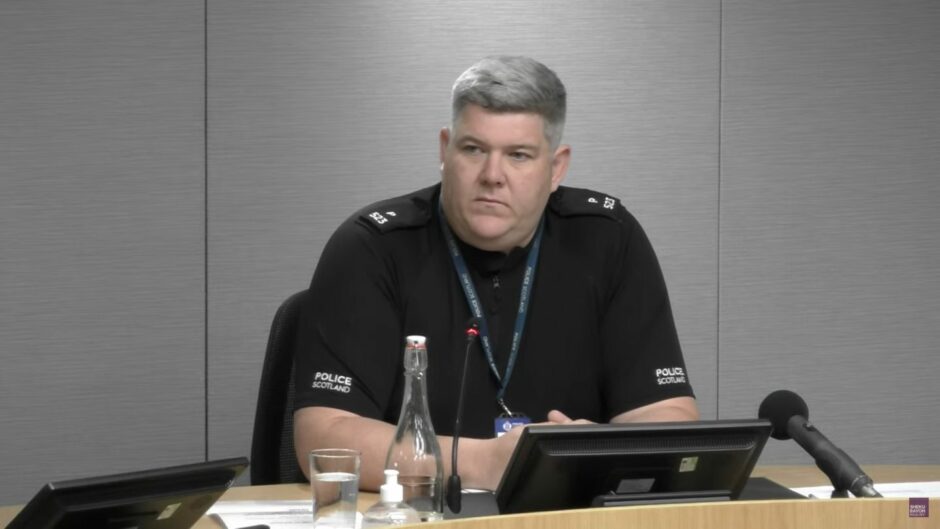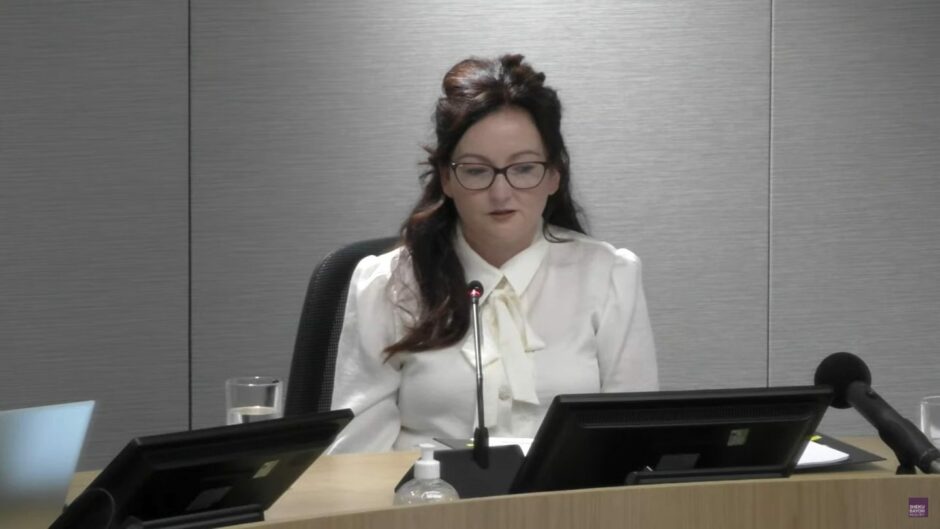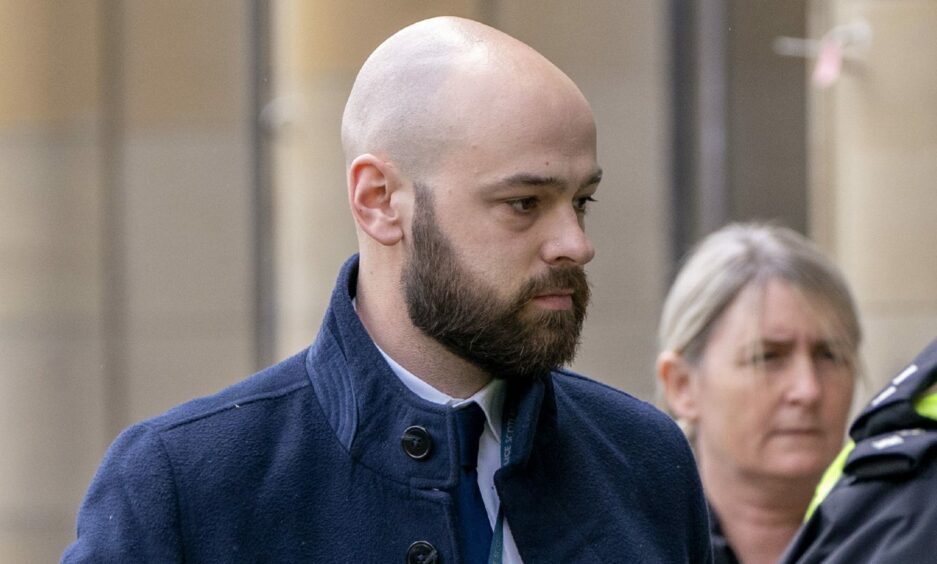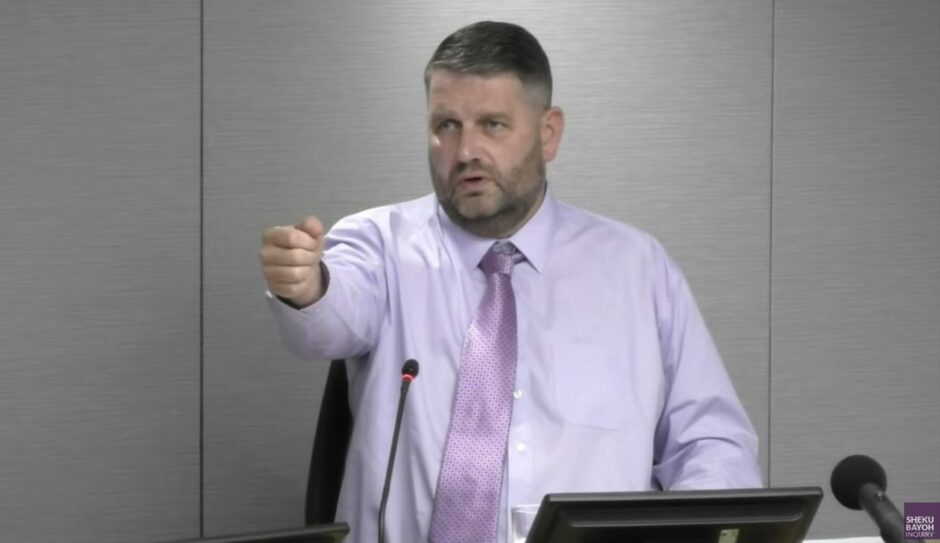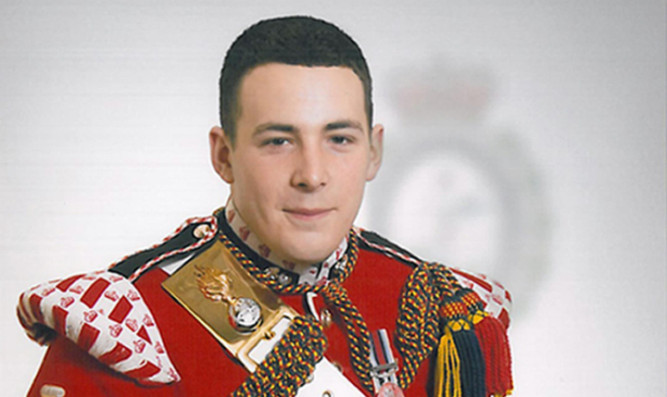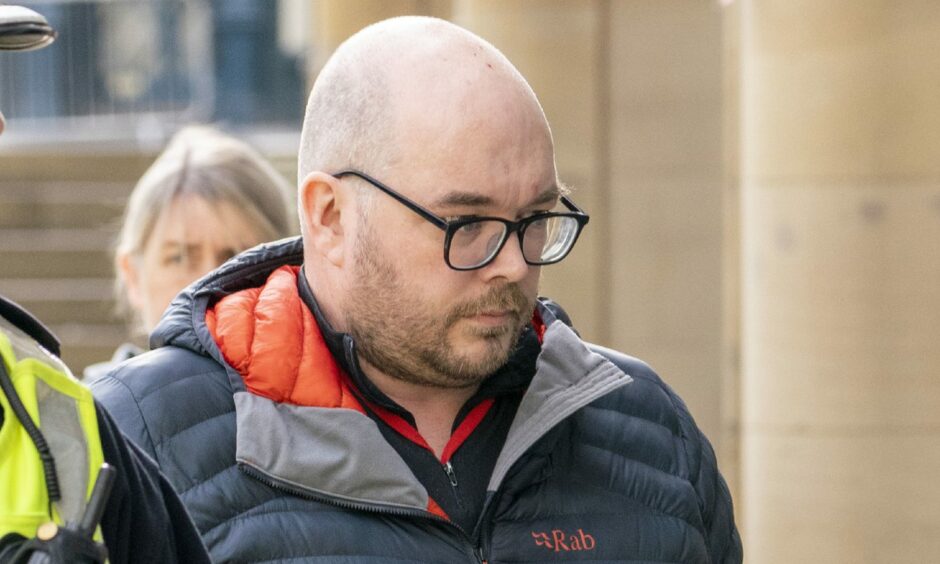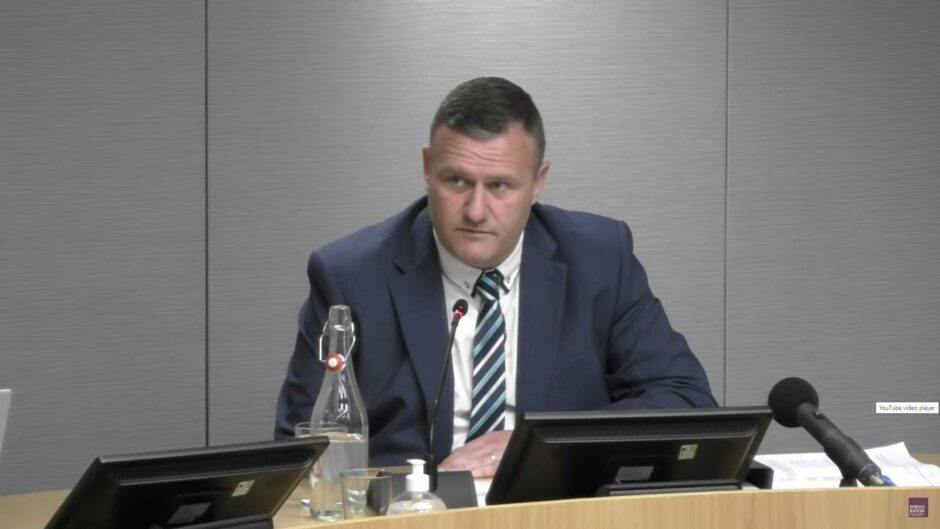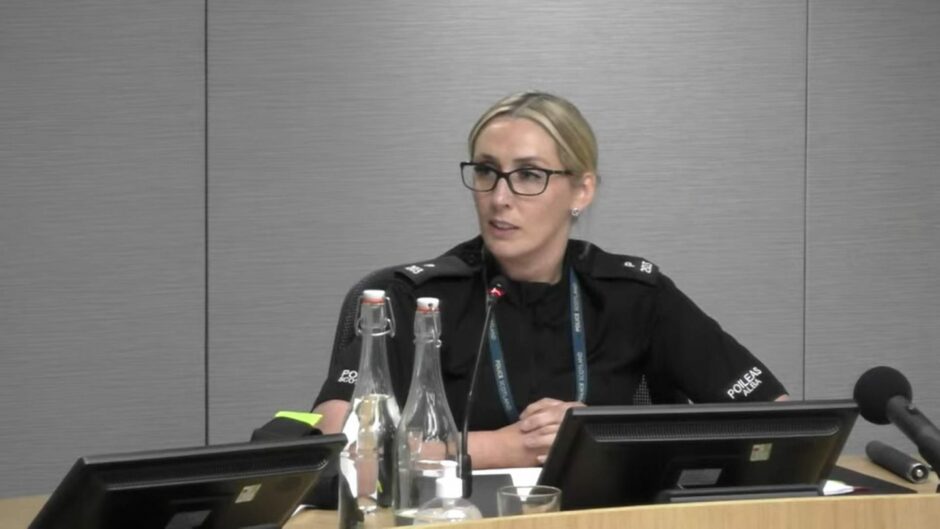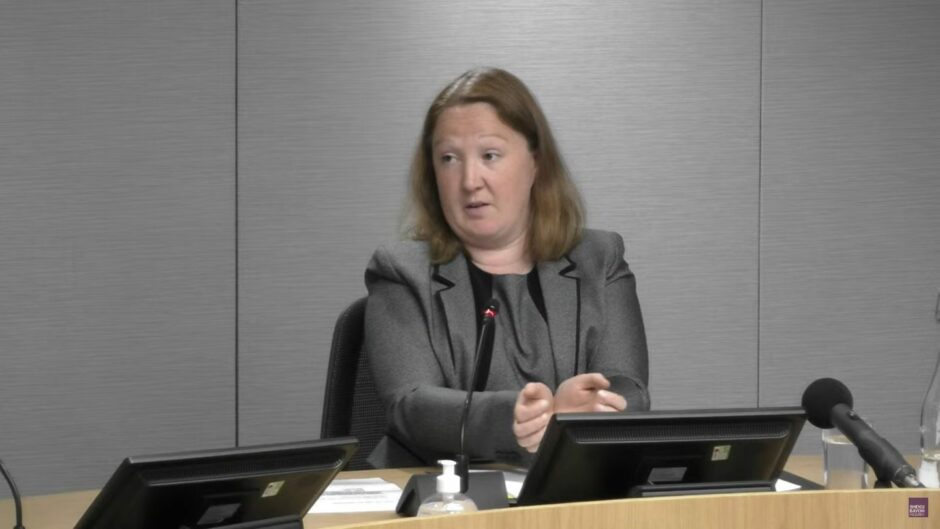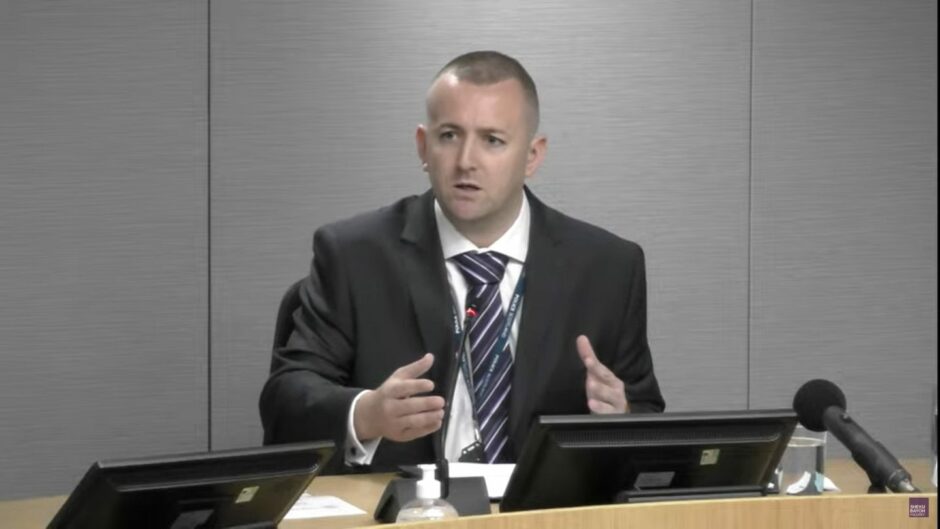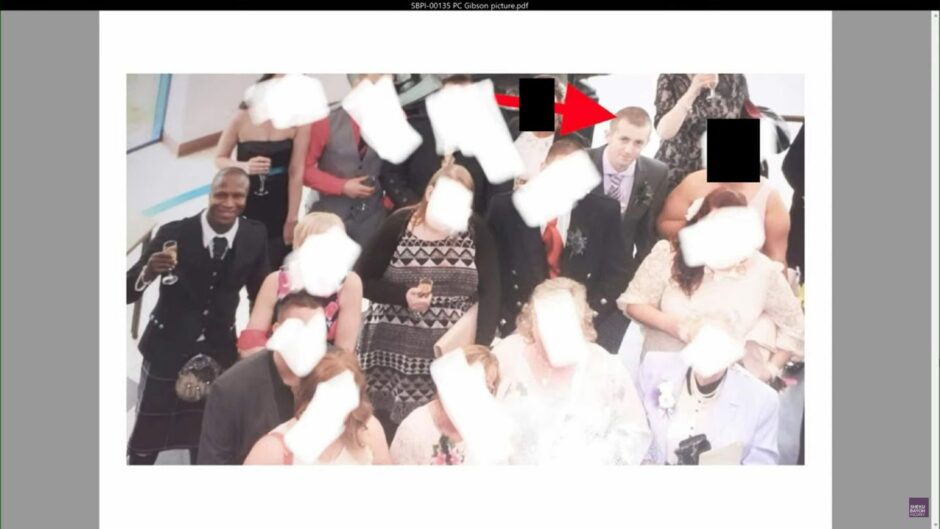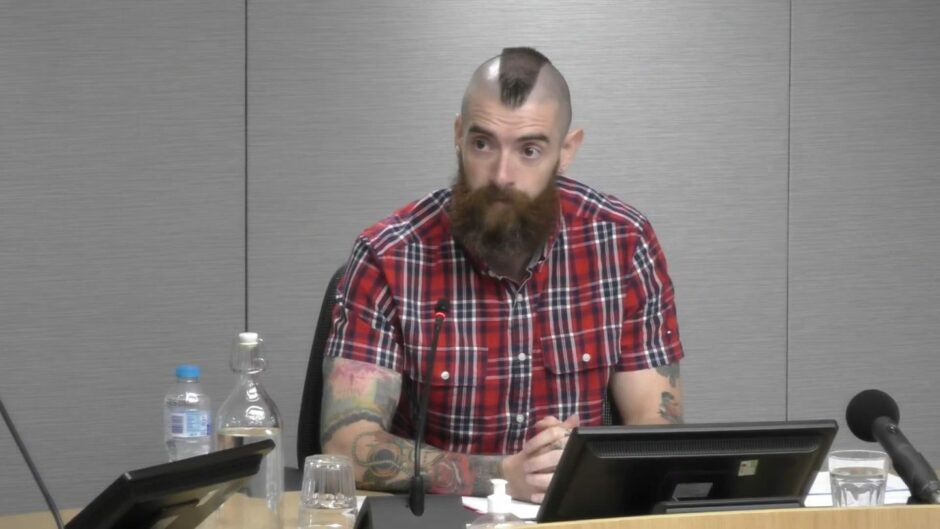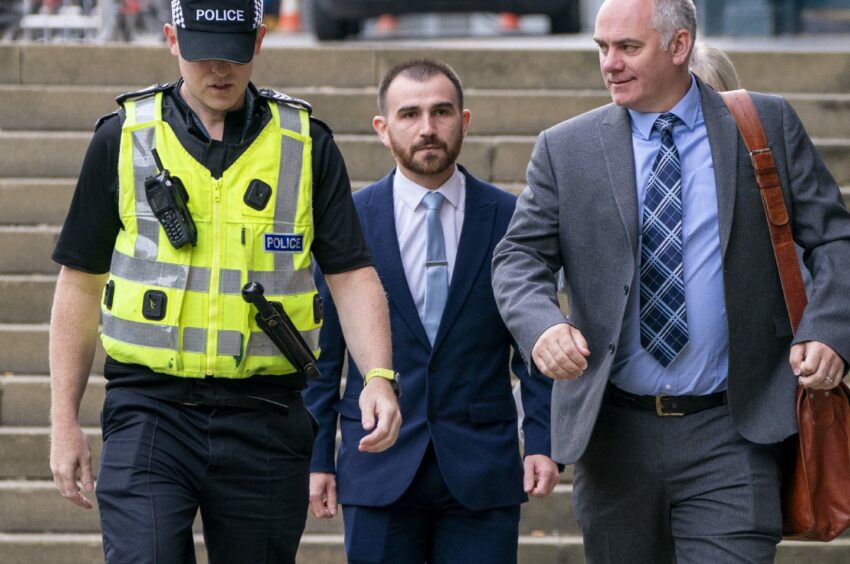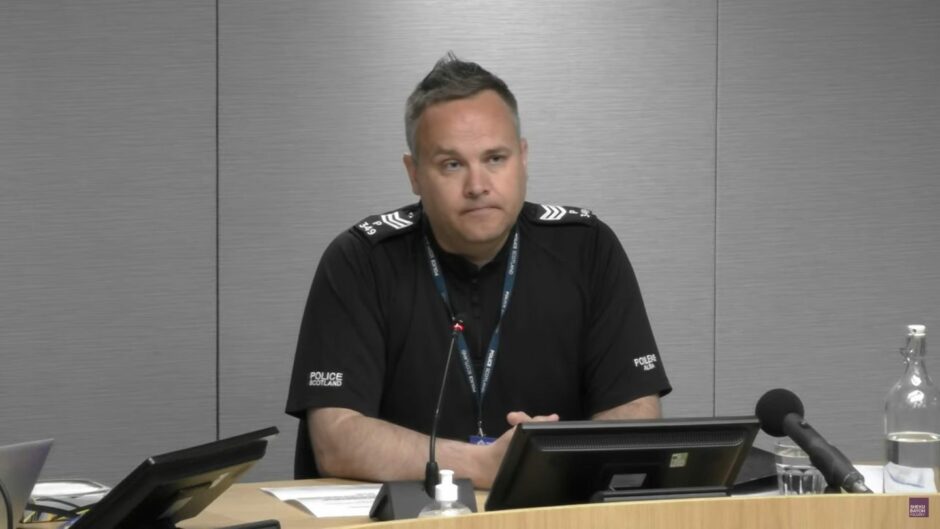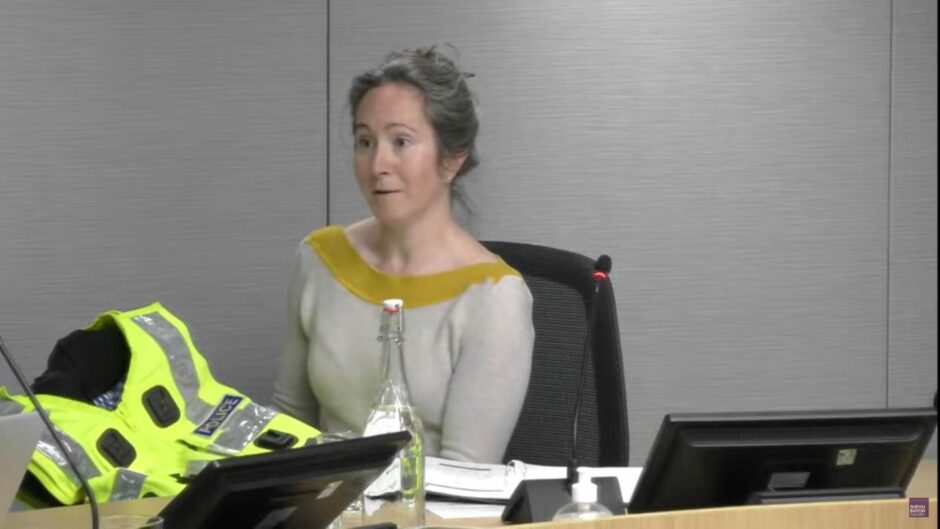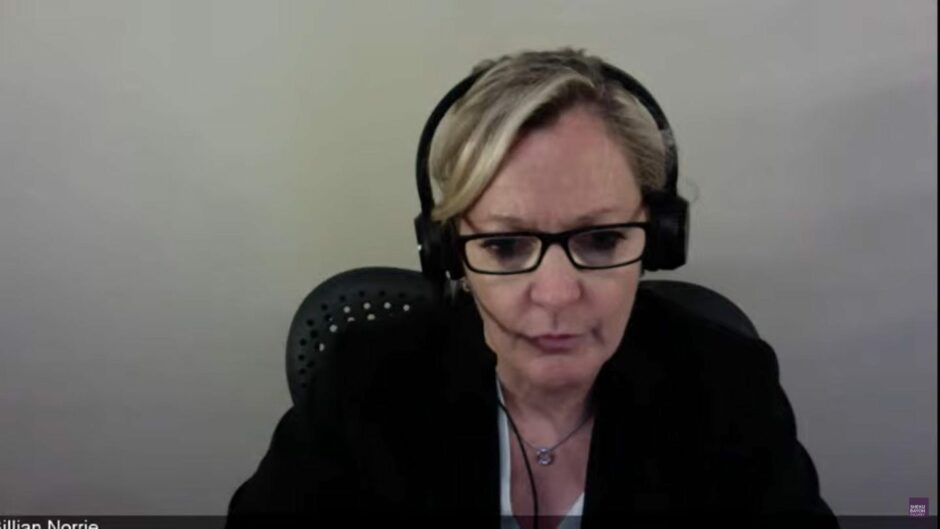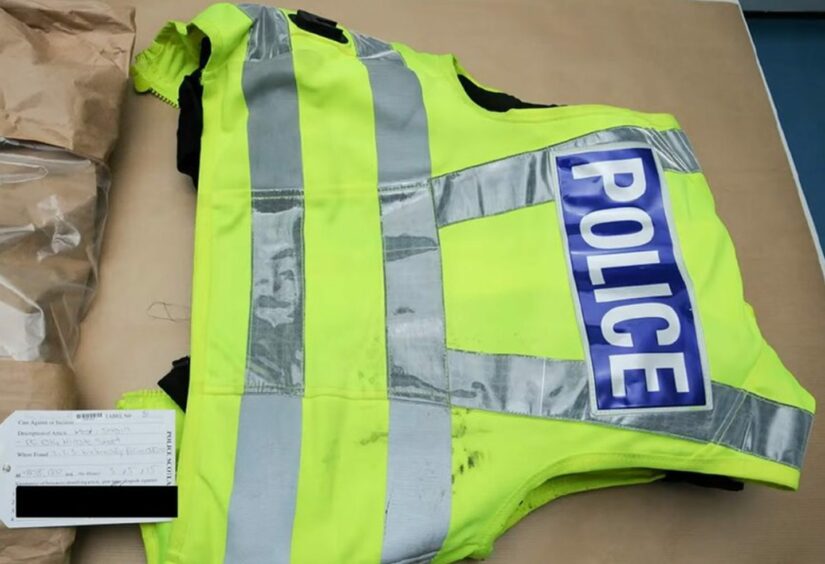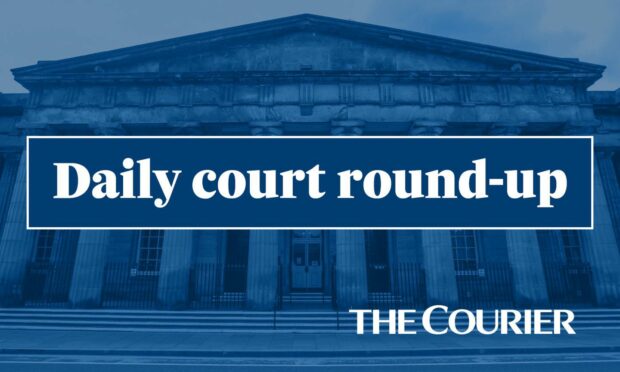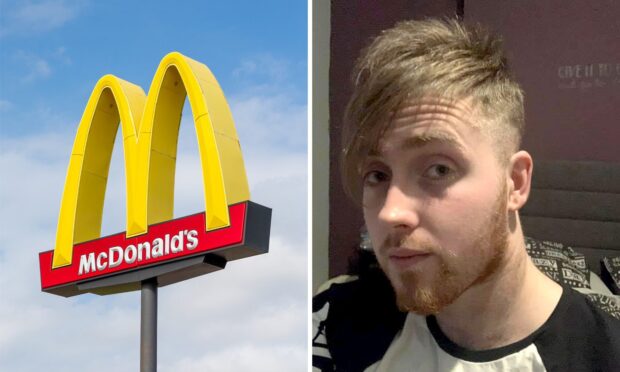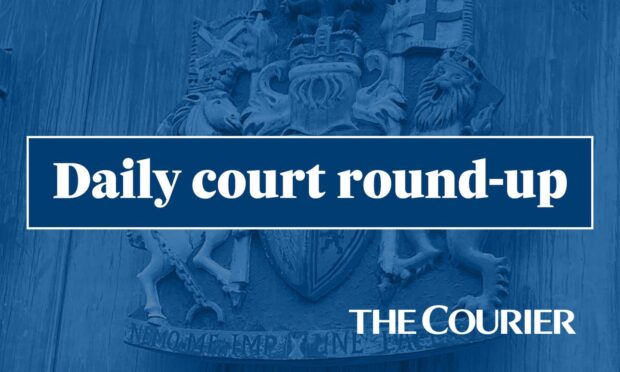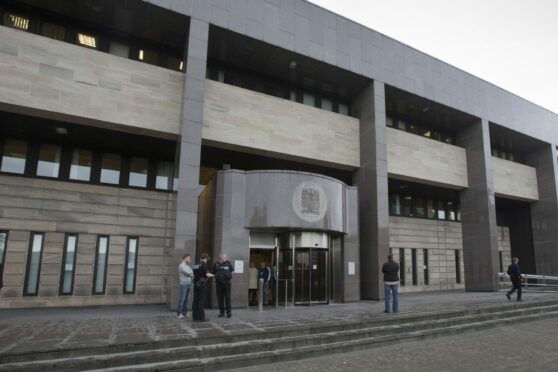The public inquiry into the death of Sheku Bayoh will re-convene on Tuesday.
The 31-year-old died in police custody as officers restrained him on Kirkcaldy’s Hayfield Road on May 3 2015 after reports he was in public with a knife.
The inquiry aims to examine the circumstances surrounding his death and whether race was a factor.
The background, who is involved and the inquiry structure can be viewed here.
Below is a summary of evidence already given to the inquiry, which is being chaired by Lord Bracadale.
Mr Bayoh’s family
The first day of the hearing was dedicated to the family of Mr Bayoh, who campaigned for the inquiry.
His sister Kadi Johnson told how she had encouraged her brother to move to Kirkcaldy and how she no longer felt safe in Scotland following his death.
Advanced Laser Imaging
Advanced Laser Imaging (ALI) is run by two former police investigators with experience including the inquiry into the crash that killed Princess Diana and the 7/7 bombings.
A team of investigators spent two days in Kirkcaldy, using drones and laser scanners to map the scene.
The 3D model was then altered to show how it would have looked in 2015.
The firm combined CCTV, dashcam and mobile phone footage, along with 999 calls and police radio transmissions to produce a real-time recreation of events.
By referencing CCTV of the incident and matching it with landmarks within the interactive model, ALI was able to ascertain where a knife was found.
Detective constable Derek Connell provided an image of the weapon taken on his mobile phone.
Some witnesses agreed it was similar to the weapon they saw Mr Bayoh holding.
Others were less sure.
Zahid Saeed
Mr Saeed was with Mr Bayoh and friends the night before his death at an address in Kirkcaldy, to watch a boxing match.
He said drugs had been consumed and Mr Bayoh left the property between 5.30 and 5.45am and concerned, he followed.
The pair fought at Mr Bayoh’s address after the trainee gas fitter accused him of being CID.
Much of Mr Saeed’s evidence came from written answers due to the double trauma of losing his friend and his son, murdered Edinburgh toddler Mikaeel Kular.
It was decided Mr Saeed will give evidence in another setting at a later date.
Neil Morgan
On the morning of the incident, Mr Morgan was alerted to a fight involving his neighbour Mr Bayoh.
He did not see a fight but encountered an angry or upset Mr Bayoh coming from his house in Arran Crescent with a knife.
He invited him into his own house for a coffee but Mr Bayoh declined.
He noted Mr Bayoh’s “starey eyes” and believed him to be under the influence of drink or drugs.
He warned Mr Bayoh about the knife and in response, was poked in the stomach with it to demonstrate it was not sharp.
Mr Bayoh walked away and Mr Morgan did not call police but told the inquiry he should have done.
Naomi Rhodes
Another neighbour of Sheku Bayoh, she was woken at 6am by shouting and saw him fighting another man, who ran away.
She said one man had shouted: “Please stop. I’m sorry.”
She did not see any weapons.
She described Mr Bayoh as “a good neighbour” but said he was “not his normal self” that day.
Harry Kolberg
Returning home after picking his son Robson, from work, his dashcam captured Mr Bayoh, a stranger to him, on Templehall Avenue at 7.09am.
As he passed he heard a thump and Robson Kolberg told his father Mr Bayoh was chasing the car, holding a knife.
Mr Kolberg stopped near a petrol station on Hendry Road and called 999.
He then turned to take his original planned route along Hayfield Road and encountered Mr Bayoh for a second time.
Footage from the dashcam and Robson’s mobile phone shows Mr Bayoh walking towards vehicles, several of which turned around and drove away.
Mr Kolberg did not see if Mr Bayoh was holding a knife.
He returned to the petrol station and called 999 for a second time.
David Grey
The former police officer was driving a Mercedes Sprinter van on Hayfield Road.
He described Mr Bayoh as walking with his palms out and holding a knife in his left hand and suspected he was under the influence of drink or drugs.
Alan Pearson
Mr Pearson drove into Templehall Avenue, where his wife witnessed Mr Bayoh with a knife.
He next encountered him on Hayfield Road and saw him hit the roof of a taxi driving in the opposite direction.
He stopped and Mr Bayoh approached his vehicle with a knife in his right hand.
Simon Rowe
The taxi driver witnessed Sheku Bayoh on Templehall Avenue with a knife.
He phoned police then continued to drop off a fare.
Returning, he saw Mr Bayoh on Hayfield Road but did not see the knife.
Linda Limbert
Linda Limbert was a nurse at the A&E department at the Victoria Hospital.
Mr Bayoh approached her vehicle as she drove to work.
She noted he had a knife and was “flailing” his arms.
She drove off and called 999.
Around 30 minutes later Mr Bayoh was brought, handcuffed and unconscious, into the hospital by ambulance and Ms Limbert recognised him.
There was difficulty applying a mechanical CPR device so it was done manually.
Adrenaline was administered. Medics had difficulty gaining IV access.
Mr Bayoh received three shocks in a bid to restart his heart.
Life was pronounced extinct at 9.04am after 79 minutes of attempted resuscitation.
PC Kara Ferrier
Ms Ferrier said around the time of the incident officers had been warned the terror threat level had been raised.
The arrest and restraint
Multiple vehicles were driven to the scene.
CCTV footage from a nearby pub shows them arriving and Snapchat footage from a nearby house shows a number of officers restraining Mr Bayoh.
During the questioning of Inspector Steven Stewart, who was in charge of the Police Scotland control room at Bilston Glen, officers’ action on arrival were revealed.
In the 75 seconds from arrival on Hayfield Road to Mr Bayoh being restrained on the ground they used three rounds of CS and PAVA spray, batoned him to the head and body and shoulder-charged him to the ground.
Inspector Steven Stewart
He said officers would have carried out a “dynamic risk assessment” on arrival and fed the information to control.
Inspector Stewart said had he been on scene he may have observed any suspect from a distance at first but in this case officers “have come into contact with the male almost immediately.”
He monitored the local radio group for Kirkcaldy officers and transmitted a standard “stay safe” message to attending officers.
Armed response officers in Edinburgh were asked to listen into the Kirkcaldy broadcast and a dog unit was called for.
It was not declared a firearms incident and armed police did not attend.
At 9.12am a phone call was made to Inspector Stewart from Inspector Stephen Kay, a local officer from Dunfermline.
Mr Bayoh is described by Inspector Kay as being “the size of a house” and that he “ran at them with a knife”.
Inspector Stewart said he did not consider the incident to be terror-related and said Mr Bayoh’s colour had not influenced his handling of the incident.
Information Mr Bayoh had been sprayed with PAVA and CS spray and may have a head injury after being hit by a baton was passed to the control room and recorded on the incident log.
However Inspector Stewart could not say if officers had passed this to the ambulance service, which has no record of this information.
PC Craig Walker
Among the first officers on the scene, he said he did not see a knife but could not be sure one was not concealed.
He said as he drove to Hayfield Road, he had considered running Mr Bayoh over on arrival.
The 25-stone, 6’4″ officer also shoulder barged Mr Bayoh and said he punched him to the face to try to force his hands up so handcuffs could be applied.
He denied Mr Bayoh’s race had influenced his actions and told the inquiry Mr Bayoh’s “muscular” frame and the fact he was reported as having a knife were the main considerations.
PC Nicole Short
PC Short walked parallel with Sheku Bayoh as he made his way along a footpath, shouting at him to stop.
She said he turned and chased her before hitting the back of her head.
She fell to the ground and remembers curling into a ball to protect her head, before being picked up by her stab vest and told to run to a nearby police van.
She watched as colleagues restrained Mr Bayoh.
She told the inquiry she believed Mr Bayoh’s death was “unavoidable”.
DC Ashley Tomlinson
Then a PC, he claimed to have used PAVA spray to get Mr Bayoh’s attention before the “charge” at his diminutive colleague.
Like PC Walker, he said Mr Bayoh stamped on PC Short’s back and feared she had been killed.
He struck Mr Bayoh several times with a baton and was involved in the subsequent restraint after the suspect was rugby tackled by PC Walker.
The level of force used against Mr Bayoh was assessed as “deadly” at its highest – when his behaviour was deemed to have escalated to “serious/aggravated assaultive resistance” meaning there is a threat of serious injury or danger to life on the part of a suspect.
Deadly force is defined by Police Scotland as a level with “potential to cause serious injury or even death when it is applied”.
PC Tomlinson maintained this level of force was justified.
Alan Paton
With PC Walker, former constable Alan Paton was one of the first officers on the scene.
He told the inquiry he feared he was going to be killed in a “Lee Rigby incident” after being incapacitated by his own CS spray.
Mr Paton said he did not see a knife on arrival but believed Mr Bayoh could have it concealed.
Because the UK terror alert level was at severe Mr Paton said he took the possibility of terrorism into account during every call regarding a knife.
There had been a rumour around Kirkcaldy police station a “lone wolf” was going to target a female officer, he claimed.
On arrival, Mr Bayoh with “bulging” eyes was refusing to follow instructions so he deployed his spray but it blew back into his own eyes.
He was incapacitated for a time but helped in the restraint when he had recovered and took part in the resuscitation attempt.
Mr Paton said he believed Mr Bayoh was attempting to find Mr Saeed and possibly kill him.
The former officer said a number of complaints made against him in his career, including one related to race, were “unfounded”.
He denied having told his grandfather he “was a total racist and hated all blacks”, saying the claim arose from a family dispute.
PC Alan Smith
Arriving on scene after the alleged assault on PC Short, he checked her condition, then went to assist with the restraint.
After Mr Bayoh fell unconscious, he was kept in handcuffs, which PC Smith said was a precaution against a recurrence of violence if he regained consciousness.
Kevin Nelson
From his flat overlooking the scene, Mr Nelson saw Mr Bayoh walking quickly along the street due to the poor weather and said he hid not appear to be “on a mission” before his arrest.
He said he did not see the alleged stamp on PC Nicole Short but confirmed Mr Bayoh had punched her and she stumbled.
PC Walker then tackled Mr Bayoh and he moved to his garden to watch the arrest.
He described a “collapsed rugby scrum” of people outside his gate, with Mr Bayoh face-down on the pavement.
Ashley Wyse
The upstairs neighbour of Kevin Nelson, Ms Wyse filmed the restraint from her bedroom window.
The subsequent Snapchat footage has been a key piece of evidence in the inquiry as it is one of a handful of pieces of video taken that day and the only one to show a close view of the restraint.
PC Kayleigh Good
A rookie officer at the time, she heard the incident call over her radio and feared PC Short had been stabbed.
She said on arrival she was met by a “petrified” PC Short who appeared “winded”.
PC Good stayed with PC Short during the restraint period.
Dr Gillian Pickering
The medic who treated Sheku Bayoh on arrival at Victoria hospital said he was initially wearing handcuffs, which were quickly removed.
She told the inquiry failure to do so would have hindered attempts to perform effective CPR.
She said Mr Bayoh had a fractured first rib – under the collar bone – a common injury when CPR is carried out on a young, healthy individual.
She agreed a fracture in this area would likely to have been caused by the combined 58-stone weight of the police officers.
Medics gave Mr Bayoh three shocks and administered multiple doses of adrenaline.
They also gave him a drug-reversal medication called naloxone but his had no effect.
They were unable to revive him.
PC Daniel Gibson
PC Gibson was involved in the restraint, lying across Mr Bayoh’s legs.
He told the inquiry the circumstances were “rare” and he had “never been to a call like that before”.
He was not aware of Mr Bayoh’s race prior to arrival and it was the first arrest of a black person in which he had been involved.
The inquiry was shown a photo of PC Gibson and Mr Bayoh at the same wedding in 2013.
DC Samantha Davidson
The CID officer said she and a colleague, DC Derek Connell has attended the Priority 1 call as Kirkcaldy was short-staffed.
She arrived after the restraint had begun and recalled Mr Bayoh being face down.
She said PC Craig Walker was not leaning his weight on Mr Bayoh’s body but on his arm and shoulder.
She went to bring the custody van closer and found PC Nicole Short inside.
PC Short told her about being hit in the head but did not mention the alleged stamp.
On her return to the scene with the vehicle Mr Bayoh was unresponsive and in the recovery position.
She took charge of the scene at around the time the ambulance arrived.
Christopher Fenton
A psychiatric nurse at the nearby Whyteman’s Brae facility, Mr Fenton passed the scene of Mr Bayoh’s arrest.
He said Mr Bayoh was face-down in a “scrummage” of people.
Trained in restraint techniques himself, he told the inquiry he did not see anything that concerned him about the incident but admitted there are risks involved in restraining people.
PC James McDonough
PC McDonough, another rookie officer at the time, assisted in the restraint.
He also found a knife on a nearby grass embankment after he took a step back while colleagues gave Mr Bayoh CPR.
He said senior officers had not given him and his colleagues information on whether they were witness or suspects and that his mental health suffered after the incident.
The ambulance
The ambulance called when Sheku Bayoh became unconscious was initially sent to the wrong location on the other side of Kirkcaldy.
Paramedic David Taylor said he and a colleague were in Glenrothes when they were asked to attend Seafield Road.
That area is more than two miles from the correct location of Hayfield Road.
He said the updated information was given to them in time to divert but this would not have been as easy if the change had come in just a few minutes later.
Ultimately he said the mistake did not affect the response time.
In his report, Mr Taylor noted both of Mr Bayoh’s pupils were fixed and dilated.
A monitor revealed his heart was beating too fast and Mr Taylor was able to find a faint pulse.
The only treatment available to paramedics was the administration of oxygen as Mr Bayoh was not in cardiac arrest
They rushed him to the Victoria hospital.
Sergeant Scott Maxwell
As the officer in charge on the day, he ordered all units to attend at Hayfield Road following reports the 31-year-old was “chasing someone” with a knife.
Sgt Maxwell said the first officers on the scene – PC Craig Walker and PC Alan Paton – were among his most experienced and trusted team members.
He said following the incident he checked on the welfare of his officers.
The inquiry was told he hugged and reassured his team, who were “upset and in shock”.
Dr Katherine Mitchell
Dr Mitchell treated PC Short at Victoria hospital.
She told the inquiry PC Short did not complain of pain in her side despite the police officer telling the inquiry she suffered “searing pain” in the minutes following the attack.
Dr Mitchell said she would have made a note of such an incident in PC Short’s notes as it would have been relevant to the medical history.
Dr Gillian Norrie
The forensic expert was called to Kirkcaldy police station to document injuries suffered by officers.
She said PC Short told her about being stamped on but did not find any injury in that region.
She examined Mr Bayoh’s friend Zahid Saeed and noted six different injuries.
She criticised the approach of PIRC when they interviewed her in 2018, calling it “confrontational”.
The forensic evidence
The officers were gathered in a canteen at Kirkcaldy police station.
PC Short’s vest was propped against a wall, where others noted a mark on the back.
Scottish Police Federation representative, PC Amanda Givan, told the inquiry the mark was “roughly the shape of a shoe” but the forensic team did not find evidence to support this.
Laura MacPhie, who works at the Scottish Police Authority’s mark enhancement laboratory, said she found nothing “of relevance or anything that looked like footwear” on it.
She paid particular attention to an “area of discolouration” to the rear of the vest.
Another expert, SPA scene examiner Judith Harley took photographs of PC Short’s face, hands, elbows and knees.
Asked why there were no photographs of PC Short’s torso or back, she told the inquiry she assumed she was not asked for them.
At the station
CCTV footage from inside Kirkcaldy Police Station was shown to the inquiry.
PC Brian Geddes, a custody officer who did not attend Hayfield Road, can be heard discussing the incident with other officers.
He had knowledge of the alleged “stamping” incident, despite officers involved being told not to talk to others.
He is also heard to say while Mr Bayoh is not dead yet, it’s “just a matter of time before he is”.
Officers were kept together in the canteen for several hours but at one point Craig Walker is seen walking through the station to get cups for water.
PC Geddes said he asked him who had hit Sheku Bayoh, and PC Walker replied “We all did”.
PC Walker is also seen on CCTV stating PC Short had been punched to the back of the head.
Sergeant Scott Maxwell can be seen entering the cell area during one conversation to ask for a radio.
Later in the afternoon PC Ashley Tomlinson enters the cell area for more polystyrene cups but does not talk to anyone.
The Courier’s full coverage of the inquiry can be found here.
